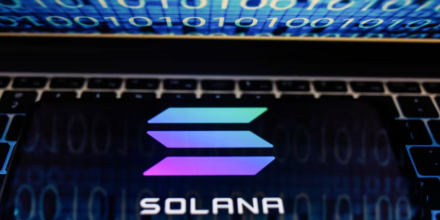Why Institutional Investors Are Shifting to Ethereum ETFs Over Bitcoin: A Strategic Move for Yield and Growth
- Institutional investors are shifting to Ethereum ETFs, which have drawn $1.83B in 2025 inflows, far outpacing Bitcoin’s $171M. - Ethereum’s 4.5–5.2% staking yields offer active returns, contrasting Bitcoin’s zero-yield model and compounding investor advantages. - Regulatory clarity for Ethereum ETFs, post-2025 approval, boosted institutional trust, with BlackRock’s ETHA attracting $13B since launch. - Ethereum’s deflationary supply and DeFi-driven innovation make it a preferred asset for yield-focused po
The crypto market is undergoing a seismic shift. Institutional investors, long skeptical of Bitcoin’s zero-yield model and regulatory ambiguity, are now flocking to Ethereum ETFs at a rate that dwarfs their Bitcoin counterparts. As of late August 2025, Ethereum ETFs have attracted over $1.83 billion in inflows this year, compared to just $171 million for Bitcoin ETFs [1]. On August 27 alone, Ethereum ETFs saw $307.2 million in net inflows, while Bitcoin ETFs managed a paltry $81.4 million [2]. This 10x advantage isn’t a fluke—it’s a structural reallocation driven by Ethereum’s superior utility, staking yields, and regulatory clarity.
The Yield Premium: Ethereum’s 4.5–5.2% Staking Edge
Bitcoin’s appeal has always been its scarcity, but scarcity alone isn’t enough to justify its premium in a world where capital demands returns. Ethereum, by contrast, offers staking yields of 4.5–5.2% for ETF holders, a stark contrast to Bitcoin’s zero-yield model [1]. These yields are not just theoretical—they’re actively compounding for investors, making Ethereum ETFs a cash-generating asset class. For institutions, this translates to a tangible edge: every dollar invested in Ethereum ETFs earns a return, while Bitcoin ETFs sit idle.
Regulatory Clarity and Institutional Adoption
Regulatory uncertainty has long plagued Bitcoin, with agencies like the SEC dragging their feet on clear guidelines. Ethereum, however, has benefited from a more defined path. The approval of spot Ethereum ETFs in early 2025 provided a legal framework that institutions could trust, leading to a surge in adoption. BlackRock’s ETHA, the largest Ethereum ETF, alone attracted $262.6 million in inflows on August 27, pushing its total inflows past $13 billion since inception [2]. Meanwhile, Bitcoin ETFs have faced mixed flows, with some days even recording outflows.
Institutional money is voting with its wallet. Investment advisers accounted for over $1.3 billion in Ethereum ETF purchases in Q2 2025 [1], signaling a broader shift toward assets that offer both growth and income. This trend is further amplified by Ethereum’s deflationary tokenomics, which reduce supply over time, creating scarcity without sacrificing yield.
Price Performance and Portfolio Diversification
Ethereum’s outperformance isn’t just about inflows—it’s also about returns. The asset hit a new all-time high of $4,946 in late August 2025 [2], driven by its role as the backbone of decentralized finance (DeFi) and smart contracts. For investors, this means Ethereum isn’t just a store of value but a platform for innovation. In contrast, Bitcoin’s price stagnation—despite its “digital gold” moniker—has left it trailing in utility and scalability.
A diversified crypto portfolio in 2025 must include Ethereum ETFs. Their combination of yield, regulatory clarity, and institutional backing makes them a cornerstone for capital preservation and growth. Bitcoin, while still a hedge against macroeconomic uncertainty, lacks the active income streams and technological evolution that Ethereum offers.
Conclusion: The New Benchmark for Crypto Allocation
The data is clear: Ethereum ETFs are outpacing Bitcoin ETFs in inflows, performance, and institutional adoption. For investors focused on yield optimization and portfolio reallocation, the choice is no longer between Bitcoin and Ethereum—it’s between a stagnant asset and a dynamic, income-generating platform. As Ethereum’s ecosystem continues to mature, its ETFs will likely remain the preferred vehicle for capital seeking both growth and returns.
Source:
[1] Ethereum ETFs Outperform Bitcoin: A Structural Shift in Institutional Crypto Allocation
[2] Spot Ethereum ETF Inflows Flip Bitcoin Once Again, Will ETH Outperform BTC?
Disclaimer: The content of this article solely reflects the author's opinion and does not represent the platform in any capacity. This article is not intended to serve as a reference for making investment decisions.
You may also like
Hopes for a December rate cut fade? Bitcoin erases its yearly gains
After the release of the delayed U.S. September non-farm payroll data, which was postponed by 43 days, the market has almost abandoned expectations for a rate cut in December.

Gold Rush Handbook | Circle Arc Early Interaction Step-by-Step Guide
Remain proactive even during a sluggish market.

Mars Morning News | Nvidia's impressive earnings boost market confidence, while growing divisions in the Fed minutes cast doubt on a December rate cut
Nvidia's earnings report exceeded expectations, boosting market confidence and fueling the ongoing AI investment boom. The Federal Reserve minutes revealed increased disagreement over a possible rate cut in December. The crypto market is seeing ETF expansion but faces liquidity challenges. Ethereum has proposed EIL to address L2 fragmentation. A Cloudflare outage has raised concerns about the risks of centralized services. Summary generated by Mars AI. The accuracy and completeness of this summary are still being improved during iteration.

Surviving a 97% Crash: Solana’s Eight-Year Struggle Revealed—True Strength Never Follows the Script
Solana co-founder Anatoly Yakovenko reviewed the origins, development process, challenges faced, and future vision of Solana, emphasizing the transaction efficiency of a high-performance blockchain and the comprehensive integration of financial services. Summary generated by Mars AI. This summary was generated by the Mars AI model, and the accuracy and completeness of its content are still in the iterative update stage.
